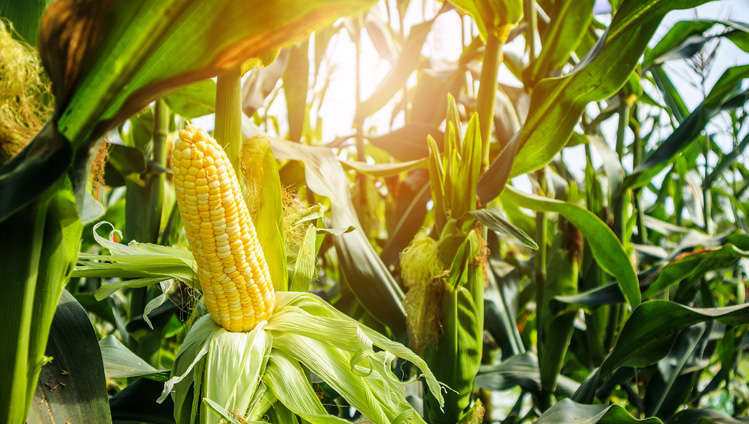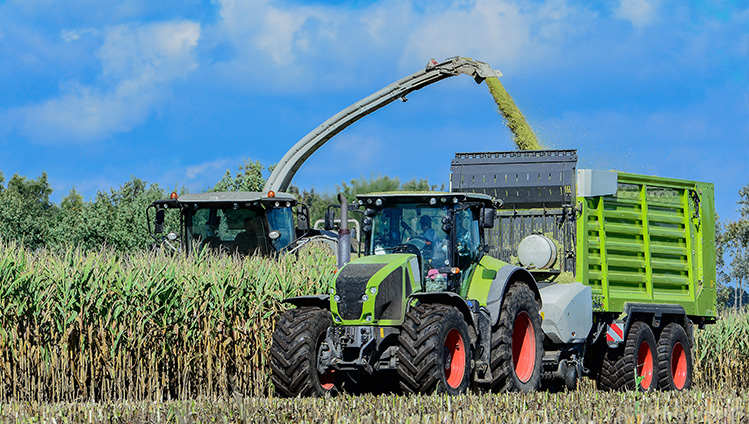People who drive past cornfields meters high in late summer are often unaware of what an all-round talent this plant of Mexican origin is. As a foodstuff, it ends up grilled on our plates or popped on the couch to sweeten a movie night. Converted into biogas or fuel, it is one of the renewable energy sources of the future. And for many farmers, it guarantees that their livestock have nutritious and vitamin-rich fodder even in winter. One of the world's oldest and most productive crops is the number one grain, ahead of wheat or rice.

But in the nearly 7,000 years that corn has been cultivated by mankind, the plant has changed significantly: from just 2.5 centimeters long cobs that grew on a short bush to today's high-performance plants of up to three meters’ lengths and 40 centimeter cobs. And so, our development experts must base their innovations in agriculture not only on the wishes of manufacturers and machine operators but also on the requirements of the plant itself.
Plants have needs, too
Whoever sits at this development table needs to be familiar with the various plants and their influence on an optimal harvesting process. For more than 60 percent of the global corn harvest does not end up in food production at all but is chopped directly in the field just to be fed to livestock as corn silage. With the large volumes and the usually short harvest periods in mind, technical support during harvesting is not only welcomed, but a necessity. Thus, the drum forage harvesters used are high-performance agricultural machines with corresponding demands on the components, which manufacturers like Continental can help to develop further.
One possibility, for example, is an optimized guide and intake belt. This grips the individual corn plant at a height of around 1.5 meters above the ground, adjusted to the new plant length, and then guides it neatly into the chopping unit. This ensures that the long stalks do not block the cutting unit on the one hand, but that as little as possible of the valuable crop remains in the field on the other.
In addition to this specific example, however, there are numerous other belts that can are used in agricultural machinery. For driving larger units, such as those used in corn harvesting, robust wide and compound V-belts transmit extremely high loads. These can cope well with the uneven power transmission of a chopping drum when it suddenly has to perform due to more or less crop. And thus, the impetus for an innovation sometimes does not lie in technology or in people, but arises from external conditions – the plant, the soil conditions, and the crop volume.
Strong belts for more sustainability
Also important in the development of belt solutions for agriculture are external factors such as individual farming traditions and the local climate. In Asia, for example, fields are much less consolidated than the large acreages in the USA. As a result, not only the harvesters in the Asian market themselves, but also their components, must be designed smaller. In addition, belts in China or India usually have to withstand more humidity, while the climate in the Midwest tends to be dry and temperatures can drop well below 0 degrees Celsius in winter.

Material development plays a prominent role in finding the optimum solution. If, for example, the previous chloroprene-based materials are replaced with EPDM, the temperature resistance of the belts increases. In addition to resistance under extreme conditions, such innovations have another advantage: those who produce more robust belts that can be designed narrower while maintaining the same performance save a lot of material – and thus contribute directly to a more resource-efficient economy. Sustainability goals can also lead to new materials being developed for use in agriculture.
Turning old into new
Finally, there is another starting point for Continental engineers to develop innovations for the agricultural industry: replacing the old with the new to protect soil, plants and machinery. To make the harvesting process more efficient and productive or to increase comfort for farmers and harvest workers.
For example, the cobs from sweet corn must not be damaged during harvesting, is first reaped using a harvester specially designed for the two-meter-long plants. This not only cuts them off, but also separates the cobs from the stalk and then transports them into the collection container. Until now, this last step has been carried out using heavy steel chains, which require a lot of maintenance and can damage the cob. Today, these chains are being replaced with a belt fitted with nubs, which gently collects the cobs and transports them into the collection container. Another benefit: unlike steel chains, belt maintenance doesn’t require oil, which in turn benefits the environment.
With all these developments, whether triggered by the manufacturer, external conditions or new plant varieties, it is important to bear in mind that it can take years from the first idea to the start of series production. Since there is a short time window for field trials under real harvest conditions. However, this staying power pays off for Continental, which can supply manufacturers of agricultural machinery with suitable belt solutions for every application. For the manufacturer, who provides farmers with more efficient and more powerful harvesting machines. For the farmer, who enjoys more yield for his livestock. For the animals, who get high-quality feed throughout the winter. And for the end consumer and the cozy movie night on the couch – with popcorn, of course.